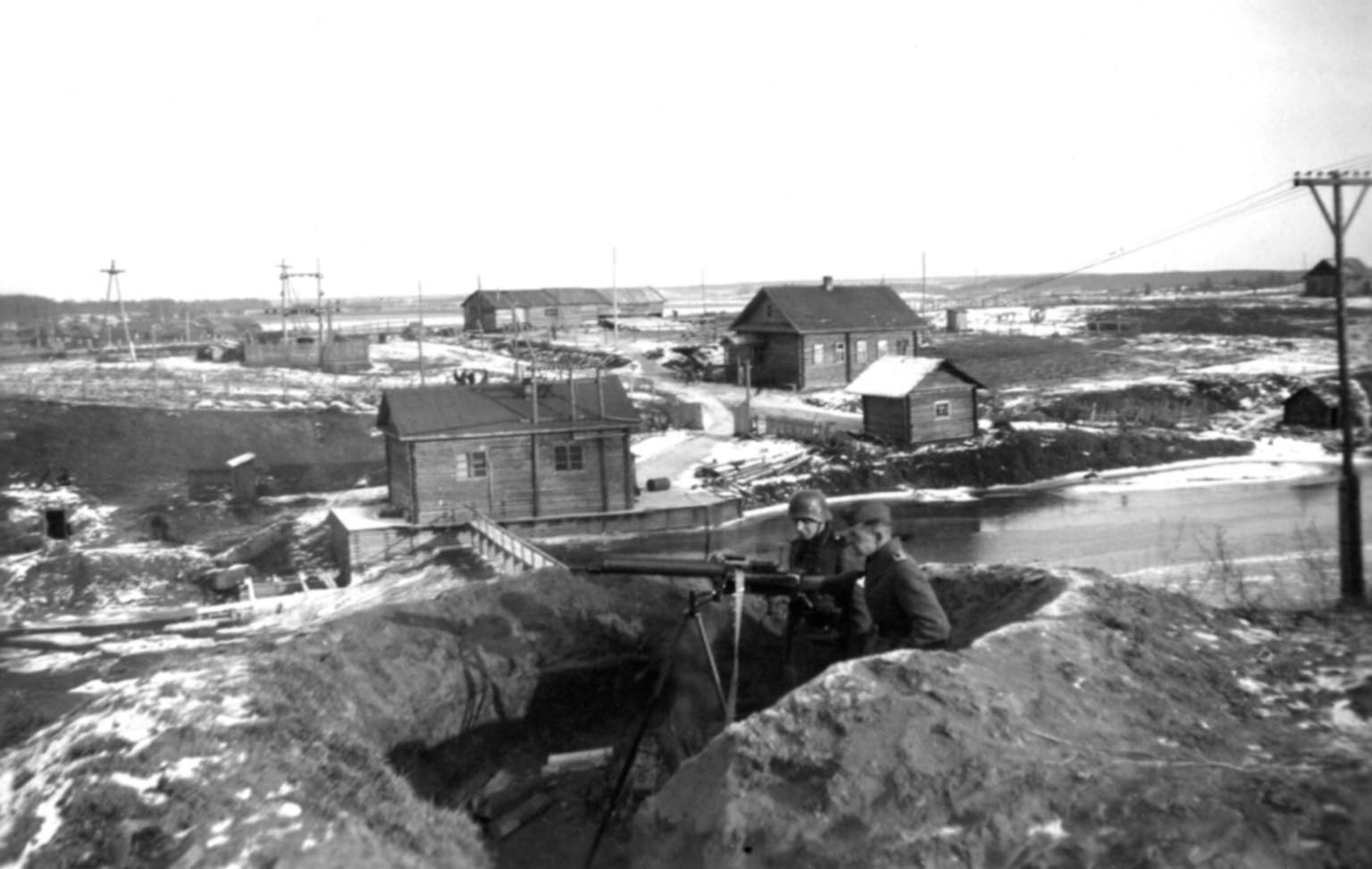The firing position of the German machine gun and team of the MG-08/15 (light machine gun on the original machine) of the Nazi Wehrmacht on the river bank. Eastern Front, World War II in Europe.
A dam and a small hydroelectric power station were built on the river, from which the village was powered and a step-up substation with two outgoing lines. Such small hydropower plants were widespread in Finland.
The MG-08/15 (German: Maschinengewehr 08) is a 7.9 mm variant of the Maxim heavy machine gun, produced in Germany since 1908 and used in the First World War. By the beginning of World War II, the MG 08 was already an obsolete weapon, its use in the Wehrmacht was explained only by the lack of more modern machine guns.
Modifications:
In 1915, the MG 08 was modified to use a two-legged bipod (instead of a four-legged machine) and a pistol grip was added. The modified machine gun became known as MG 08/15. In addition to modifications, it was distinguished from the original by a reduction in mass (by 18 kg) and improved mobility on the battlefield.
The air-cooled version of the LMG 08/15 (luftgekühltes Maschinengewehr) was developed as an aircraft machine gun. It did not have a water cooling casing, a bipod and a handle, and the cooling was carried out using an oncoming flow.
In 1918, the MG 08/18 air-cooled machine gun was put into production, which weighed 15 kg. In fact, it was already an infantry support weapon, and not a defense weapon, which made it possible to use it in offensive operations in the later stages of the First World War.
